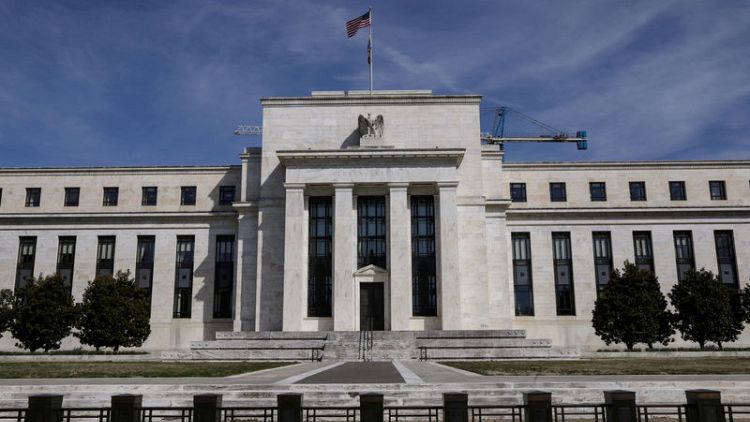By Pete Schroeder
WASHINGTON (Reuters) - The U.S. Federal Reserve on Tuesday proposed a framework for determining when a company has taken control of a bank and must face more rigorous oversight and restrictions, a move that could remove hurdles for banks seeking to attract investors and partners.
The new proposal would for the first time establish clear standards for when the central bank considers a company as taking control of a financial institution, which could be a boon for banks and investors who have had to tread cautiously as such determinations previously were made on a case-by-case basis.
A company that gains control of a bank is considered a bank holding company and, as a result, is subject to Fed supervision and a host of restrictions on other business activities.
The Fed's efforts to clarify its thinking on bank control could help banks looking for new investors or partners, including private equity or fintech firms, without subjecting them to banking regulations and other restrictions, according to analysts.
The Fed's board of governors unanimously approved the proposal at an open meeting Tuesday.
Randal Quarles, the Fed's vice chair for supervision, said in a prepared statement the regulator's prior practice of determining bank control had become "one of the more ad hoc and complicated areas of the board's regulatory administration."
"The proposal would improve the transparency of the board’s control framework by placing substantially all of the board’s control positions into a comprehensive public regulation," Quarles said.
The proposal is largely similar to the Fed's existing practices on bank control standards, but is now being made formal through a proposed rule, according to Fed officials.
Specifically, the Fed is attempting to write a blueprint for when a company exerts a "controlling influence" over a bank, which can include a combination of factors such as size of investment, number of seats held on the board, and additional business relationships.
Broadly, the proposal requires companies with greater percentages of voting shares in a bank to have less input in other factors.
For example, a company with 15 percent to 24.9 percent of the voting shares in a bank must have business relationships with the bank that amount to less than 2 percent of its revenue or expenses without being considered a controlling interest.
By comparison, a company with just 5 percent to 9.9 percent of voting shares could have a business relationship worth nearly 10 percent of its revenue and expenses.
(Reporting by Pete Schroeder in Washington; Editing by Paul Simao and Matthew Lewis)



